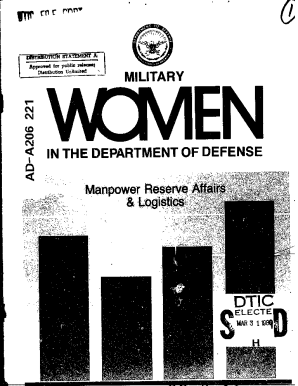Policy Options
Introduction to Policy Options
When it comes to addressing complex issues in various sectors such as economy, healthcare, education, and environment, policymakers are faced with a multitude of policy options. These options are essentially the different paths that can be taken to achieve a desired outcome or to solve a problem. The selection of the most appropriate policy option is crucial as it can have significant impacts on the effectiveness of the policy, its feasibility, and its acceptability by the public and stakeholders. In this context, understanding the nature of policy options, how they are formulated, and the factors influencing their selection is essential for effective policymaking.Formulation of Policy Options
The formulation of policy options involves a systematic process that includes identifying the problem, analyzing the context, setting goals, and generating alternatives. This process is not linear but rather iterative, with each step potentially influencing the others. Key components in the formulation of policy options include: - Problem Definition: Clearly defining the problem is the first step. This involves understanding the nature of the issue, its causes, and its consequences. - Context Analysis: Analyzing the political, economic, social, and technological context in which the policy will operate. This helps in understanding the constraints and opportunities. - Goal Setting: Establishing clear and achievable goals for the policy. These goals should align with the broader objectives of the organization or government. - Alternative Generation: Based on the problem definition, context analysis, and goal setting, generating a range of possible policy options. This should be a creative process, considering a wide array of possibilities.Evaluation of Policy Options
Once policy options are generated, they need to be evaluated to determine their feasibility, effectiveness, and potential impact. The evaluation process considers various factors including: - Cost-Benefit Analysis: Assessing the potential costs and benefits of each option to determine if they are financially viable. - Political Feasibility: Evaluating the political support for each option, considering the views of stakeholders, interest groups, and the general public. - Social Acceptability: Assessing how acceptable each option is to the public and key stakeholders. This includes considering ethical, moral, and cultural implications. - Environmental Impact: Evaluating the potential environmental effects of each policy option, especially for policies related to natural resources, energy, and infrastructure.Selection of Policy Options
The selection of a policy option involves choosing the most appropriate option based on the evaluation. This decision is often made by policymakers, who must weigh the pros and cons of each option, consider the priorities of the government or organization, and make a choice that best aligns with the overall goals and objectives. The selected policy option then moves into the implementation phase, where it is put into practice through various mechanisms and tools such as legislation, regulations, and programs.Implementation and Review
After a policy option is selected and implemented, it is crucial to monitor its progress and evaluate its outcomes. This involves: - Monitoring: Continuously tracking the implementation of the policy to ensure it is being carried out as planned. - Evaluation: Assessing the impact and effectiveness of the policy in achieving its intended goals. - Review and Adjustment: Based on the findings of the evaluation, reviewing the policy and making necessary adjustments to improve its performance or address any unforeseen consequences.📝 Note: The effectiveness of policy options can be significantly influenced by the quality of their formulation, evaluation, and implementation. Therefore, it is essential to approach these processes with a thorough and systematic methodology.
Challenges in Policy Options
Despite the structured approach to policy formulation and implementation, there are several challenges that policymakers face. These include: - Complexity of Issues: Many policy issues are complex and multifaceted, making it difficult to identify a single effective solution. - Uncertainty: There is often uncertainty about the outcomes of different policy options, which can make decision-making challenging. - Conflicting Interests: Different stakeholders may have conflicting interests, making it difficult to find a policy option that satisfies all parties. - Resource Constraints: Policymakers often face budgetary and resource constraints, limiting the scope of policy options.| Policy Option | Description | Advantages | Disadvantages |
|---|---|---|---|
| Regulation | Using laws and regulations to influence behavior | Can be effective in ensuring compliance, provides clear guidelines | Can be inflexible, may not account for all scenarios |
| Economic Incentives | Using financial incentives or disincentives to influence behavior | Can be effective in encouraging desired behaviors, flexible | May not be effective for all individuals or organizations, can be costly |
| Education and Awareness | Informing the public about issues and promoting certain behaviors | Can lead to long-term behavioral change, cost-effective | May not lead to immediate change, depends on public engagement |
In summary, policy options are the heart of the policymaking process, offering different paths to address complex issues. Their formulation, evaluation, and selection are critical steps that require a systematic and thoughtful approach. By understanding the nuances of policy options and the challenges associated with them, policymakers can make more informed decisions, leading to more effective policies that achieve their intended goals and contribute to the betterment of society.
What are policy options in the context of policymaking?
+Policy options refer to the different courses of action or decisions that can be taken to address a particular issue or problem. They are essentially the various paths that policymakers can choose from to achieve a desired outcome.
How are policy options formulated?
+Policy options are formulated through a systematic process that includes problem definition, context analysis, goal setting, and the generation of alternatives. This process is iterative and involves a thorough understanding of the issue at hand and the environment in which the policy will operate.
What factors influence the selection of policy options?
+The selection of policy options is influenced by several factors including cost-benefit analysis, political feasibility, social acceptability, and environmental impact. Policymakers must weigh these factors and consider the priorities of the government or organization to make an informed decision.



